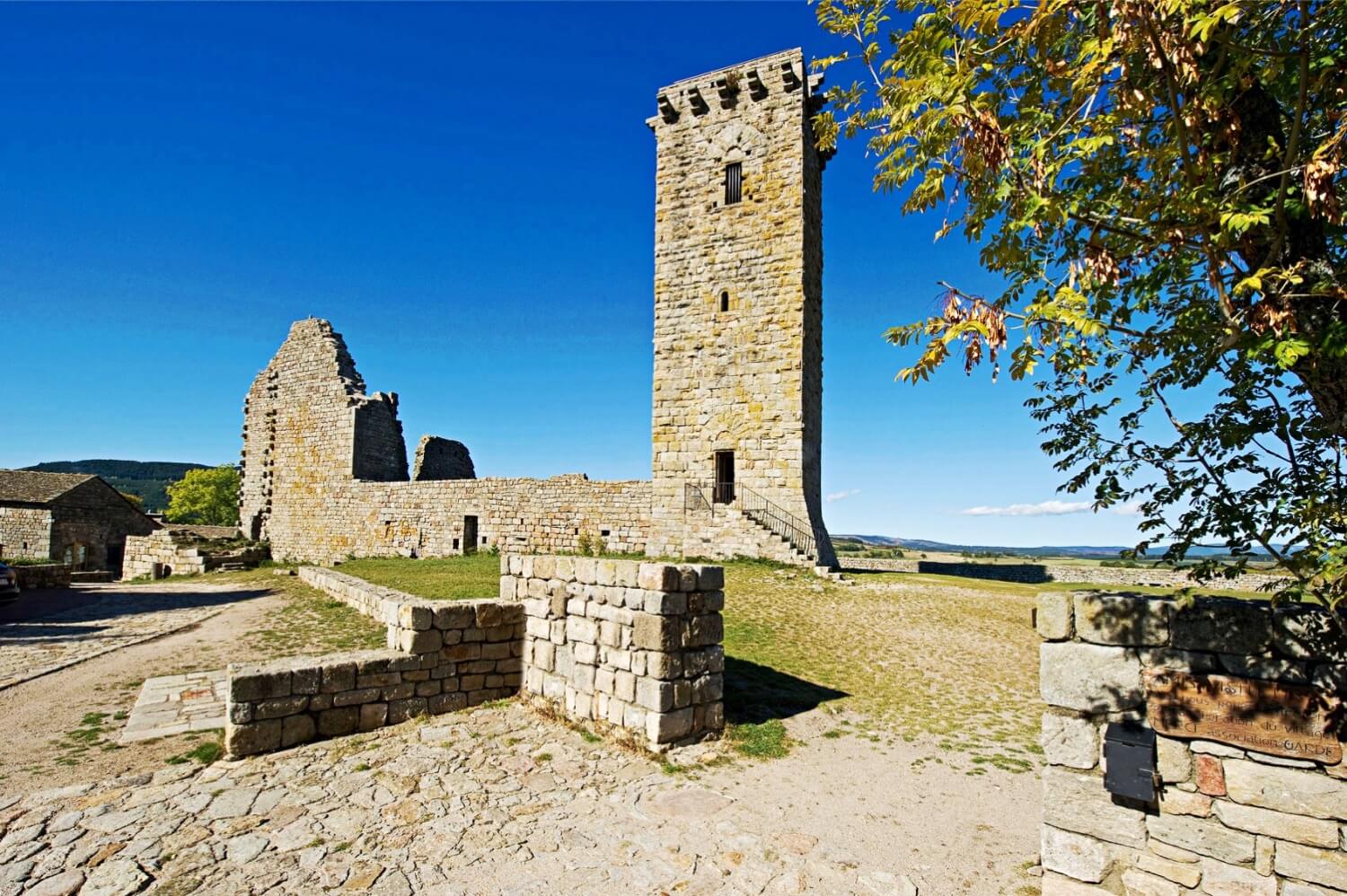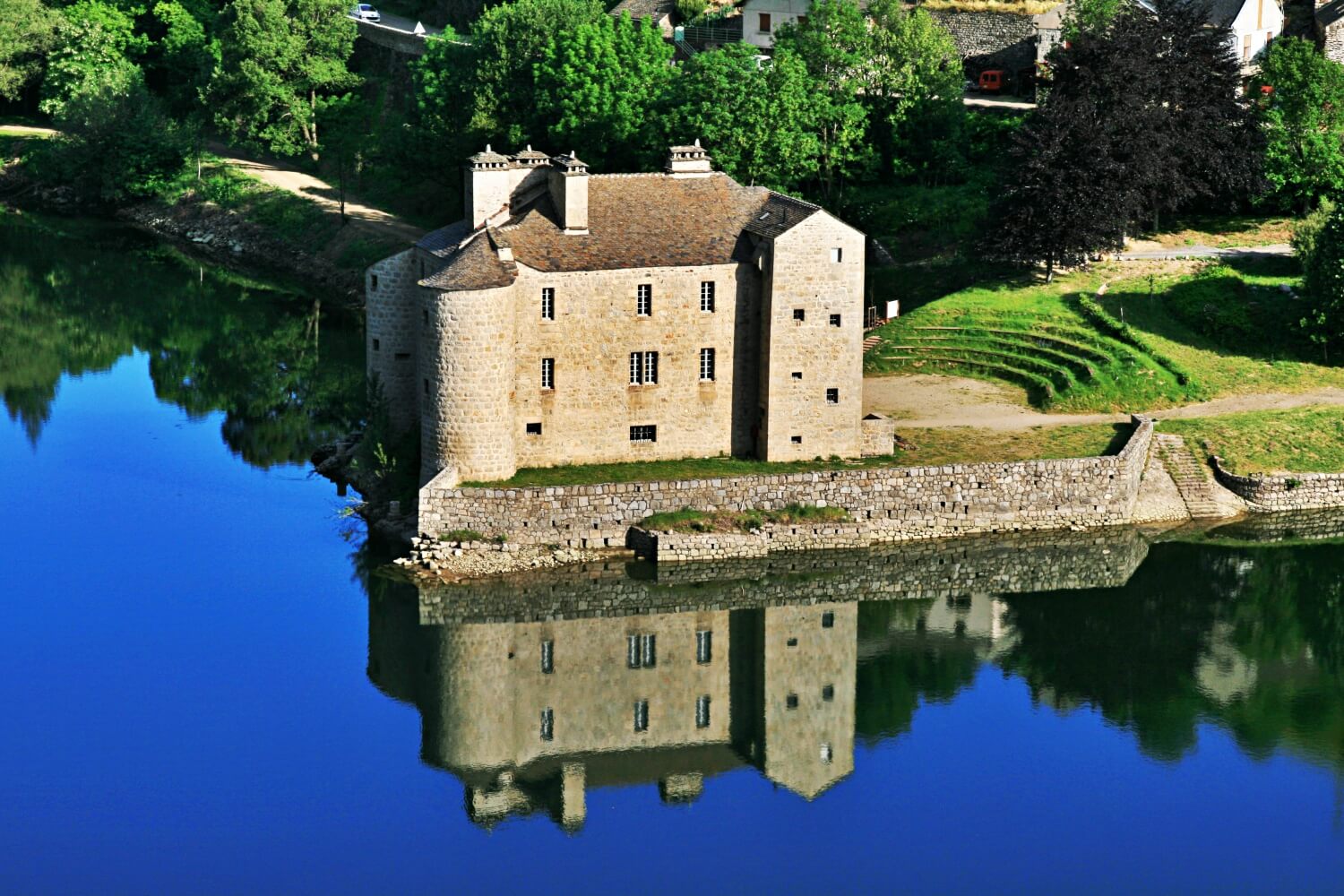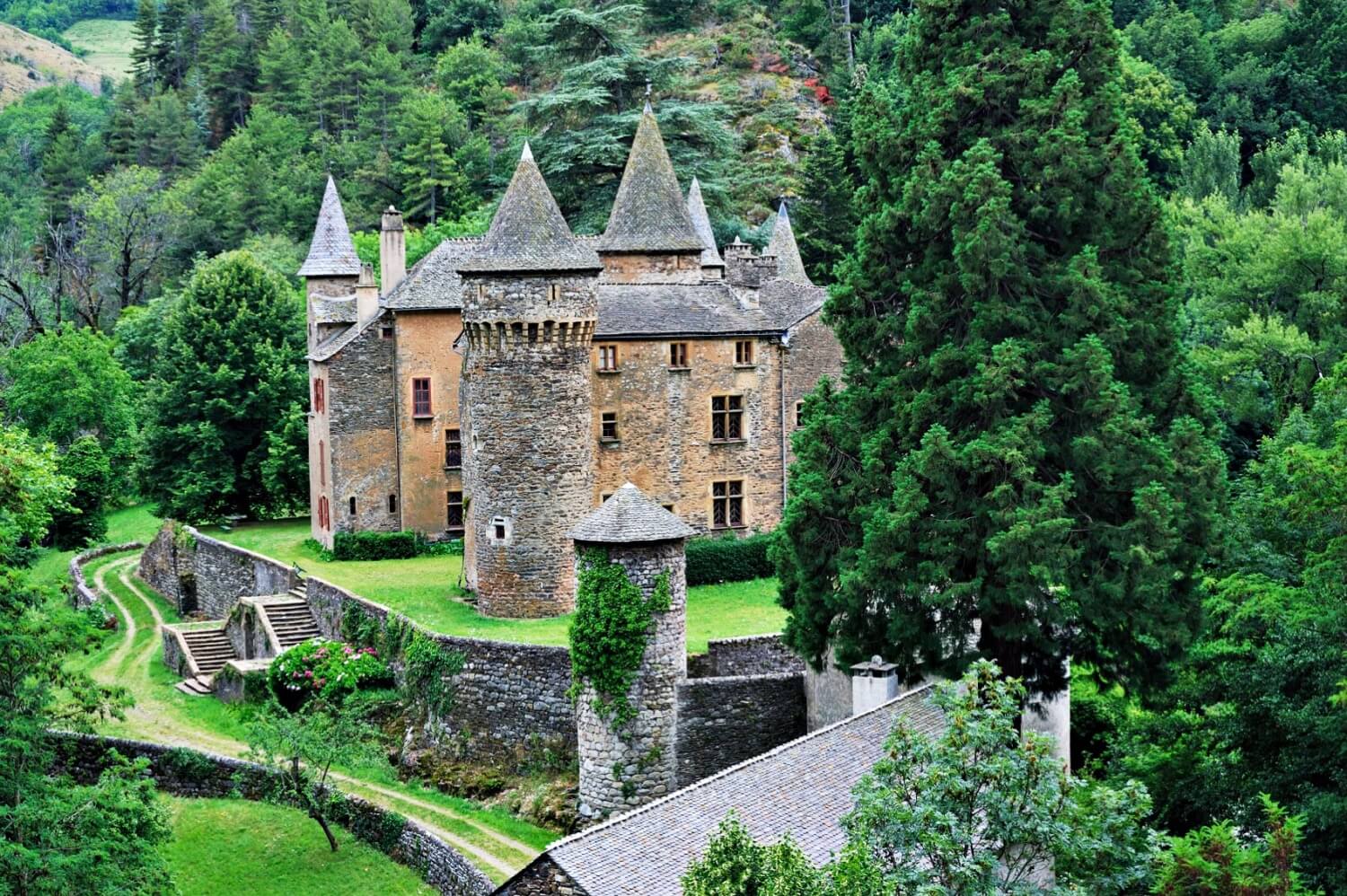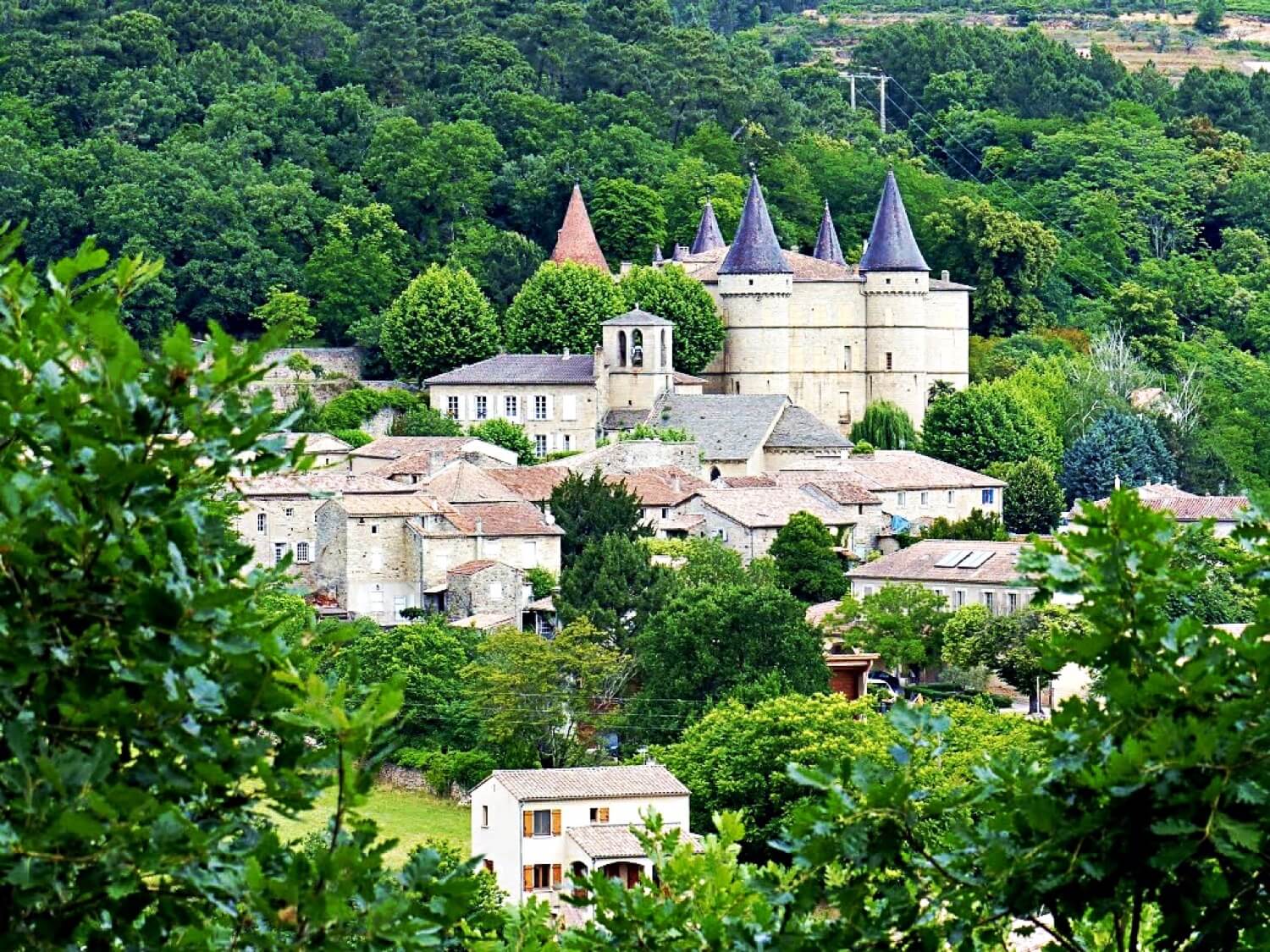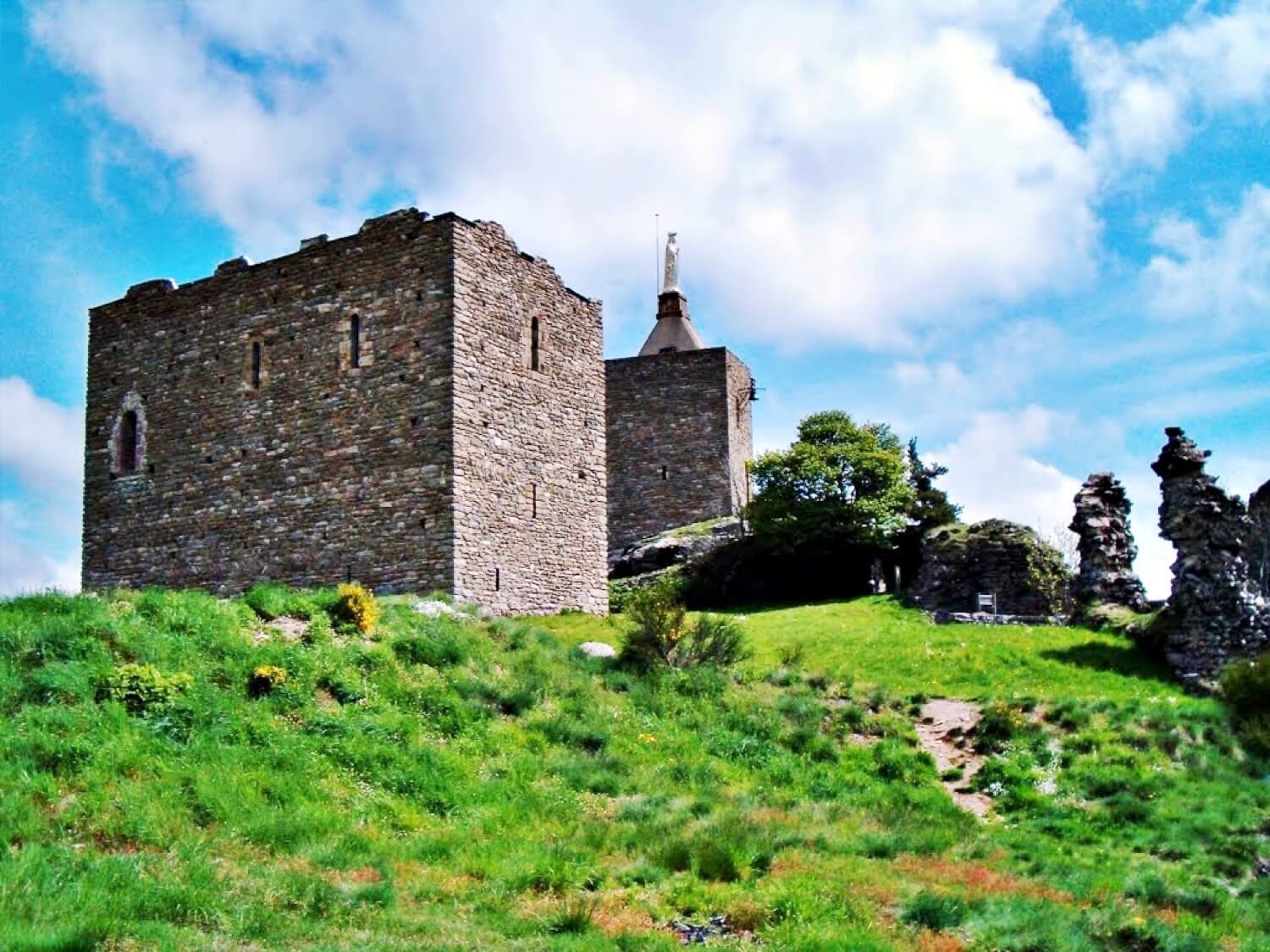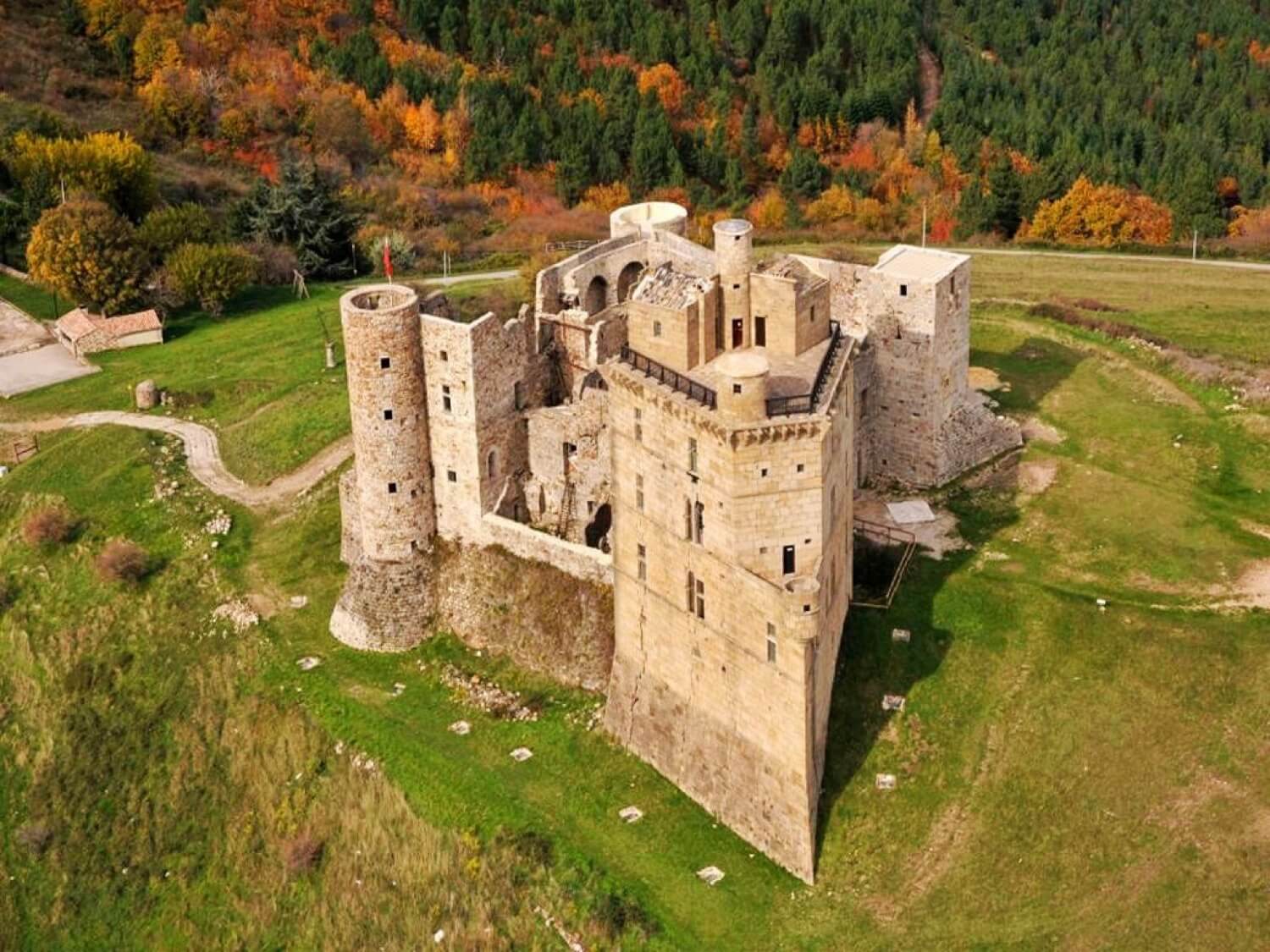Château de La Garde-Guérin
Lozère Occitanie France
castle, chateau
Château de La Garde-Guérin
Lozère Occitanie France
castle, chateau
During the 11th century, a garrison was built in the village, creating a type of police, designed to ensure the safety of the travellers
Le château de La Garde-Guérin est un château situé à Prévenchères, en France
Previous names
Château de La Garde-Guérin, Château de La Garde-Guérin
Description
During the 11th century, a garrison was built in the village, creating a type of police, designed to ensure the safety of the travellers. To pay for this, some charges were collected, especially toll charges (on all goods or travellers who passed that way), guiding charges (for protection of travellers and goods), cartelage charges (on foodstuffs which were measured a la carte), pulverage charges (when passing flocks raised dust!) and many other charges. Thenceforth La Garde-Guerin established a secular community vassal system, organised according to the headmasters of Knighthood Schools and advocating equal rights and duties for everyone. This phenomenon was unusual in France at that period but was never equalled and grew into the "Chevaliers pariers" (so called because they were equal in rights). Although Aldebert III (Bishop of Mende) could not even know what had occurred there, after several attempts, in 1163, he succeeded in besieging La Garde, leading a group of noblemen whom he had convinced of the excessive cost of the rights and the unfair behaviour of the "Chevaliers pariers". Then, La Garde was put into the care of the Guerin du Tournel Family, which is why the village was called La Garde-Guerin. The "Chevaliers pariers" shared the seigneury and each owned a house with a well. The houses were separated by very narrow "streets" (about 12 inches wide! ) called "Pans du Roi"; this was to delimic their properties, creating independencc, whereby "everyone should look to his own affairs".
In 1258, 31 properties were counted. Even now it is still possible to see same 31 houses ! From 1260 the "Chevaliers pariers" elected 2 a year who took the oath in front of the bishop. They were in charge of the sharing out of the incomes and the upkeep of the way.
In 1367, Louis d'Anjou, Count of Maine, second son of the King of France and lieutenant in Languedoc, instituted a three day's fair for Saint Catherine's day - November 25th - and a market on Mondays.
In 1721 this fair was moved to the 29th of September (Saint Michel's day: patron saint of the village).
3 The history of La Garde Guerin in Lozere (Occitanie)In the 16th century, the Bishop of Mende, Renaud de Beaume, sold his shares in the village to the lord of Morangies who then held the majority. By the end of the 16th century, during the wars of religion, the castle and the village were burnt. The village was immediately rebuilt by the heirs of the "Chevaliers Pariers". Its Renaissance style is called "Regordanien", locally linked to the Regordane Way and to certain architectural features, for example carriage entrances that can be seen in the church street in Villefort and also in other villages located along the Regordane Way.
In 1722, the castle was burnt once again because of the carelessness of a farmer. This happened because the owners preferred to go to Versailles, and let the castle to the farmers who did not take care of it. All the old rights and charges were at last abolished during the French Revolution of 1789.
In 1795, while the castle was in ruins because of the fire, one of the towers fell down on a house and killed most of the inhabitants. The building of the present road began in 1840. The Regordane Way was then only used as a transhumance way, for moving animals to seasonal pastures.
In 1929, the castle, the donjon and the church were listed as Historic Monuments and the village became a registered site.
In 1992, La Garde-Guerin was granted the label of one of the finest villages in France ("Plus Beaux Villages de France").
The Church: Supposedly dating from the 12th century, the church is in a Romanesque Provencal style dedicated to Saint Michel. The barrel vault: is made of freestone.
The crossing of the nave and the apse are supported by a double salient arch which is built on pillars.
The capitals are all different. They are all sculptured, sometimes with designs of leaves, flowers or animals, sometimes with enigmatic biblical people.
The top of the columns are often aderned with a checked pattern.
The chancel: is ornamented by harmonising arches with small columns or simple capitals. Two stained- glass windows let the light in. There is a small tornb cut in the rock under the chancel where the Consuls of the "Pariers" of la Garde were buried.
5 The history of La Garde Guerin in Lozere (Occitanie)The portal: is made of three moulded projections up to the tympan. They are carved in massive stone. The small opening up to the door lights up the altar at sunset.
The bells: One of the bells dates from 1643. They are hung up on the arches and form what is called in French 'clocher-mur", literally "wall steeple". On both sides, we can see some buttresses which support the vault's outward thrust.
The Castle: It is situated on the most north-easterly point of the village, which is the least accessible place, the easiest one to defend. A bishop's organization in 1058 recorded the existence of the castle of la Garde. We can imagine from the ruins that there were successive reconstructions and transformations of the castle during the 16th and 17th centuries, especially during the Religious Wars.
The Tower: The time of its construction is undetermined (between the 12th and the 14th century). It is 21.50 metres high, it is a three storey vaulted tower; the first floor is to store food and the others to live in. There used to be another floor but it has been destroyed.
The Ramparts: Many were demolished to give the village more daylight and the ditches were filled with the stone from the ramparts. Depending on the area, the remaining ramparts can reach 8 to 10 metres high with an average thickness of 1.65 metres. They are constructed of regular sandstone blocks that are blackened by the sun. They were originally surrounded by wide ditches cut into the rock, except at Chassezac where the rarnparts stood on the edge of the cliffs. Lots of them have been rebuilt; from the original period only a few remain.
http://la.garde48.free.fr/en/history.htm
Le château de La Garde-Guérin est un château situé à Prévenchères, en France.
Description
La tour, datée du xiie siècle, est en fait le donjon médiéval du castrum. De plan carré, haute de 21,50 mètres, elle a cinq niveaux et présente un appareil à bossage unique dans la région.
Au pied de la tour sont visibles les vestiges du logis seigneurial ayant appartenu aux consuls nobles de la Garde-Guérin. Il n'est pas d'origine médiévale puisqu'il n'est pas répertorié au vidimus de 1364. On le daterait du xvie siècle mais il a été détruit par un incendie en 1722.
Localisation
Le château est situé sur la commune de Prévenchères, dans le département français de la Lozère.
Historique
L'édifice est classé au titre des monuments historiques en 1929.
Useful information
Le parking GRATUIT
Adulte: 5 €
Groupe (à partir de 20 personnes): 4 €
lagardeguerin@gmail.com
-
External links
Nearby castles
